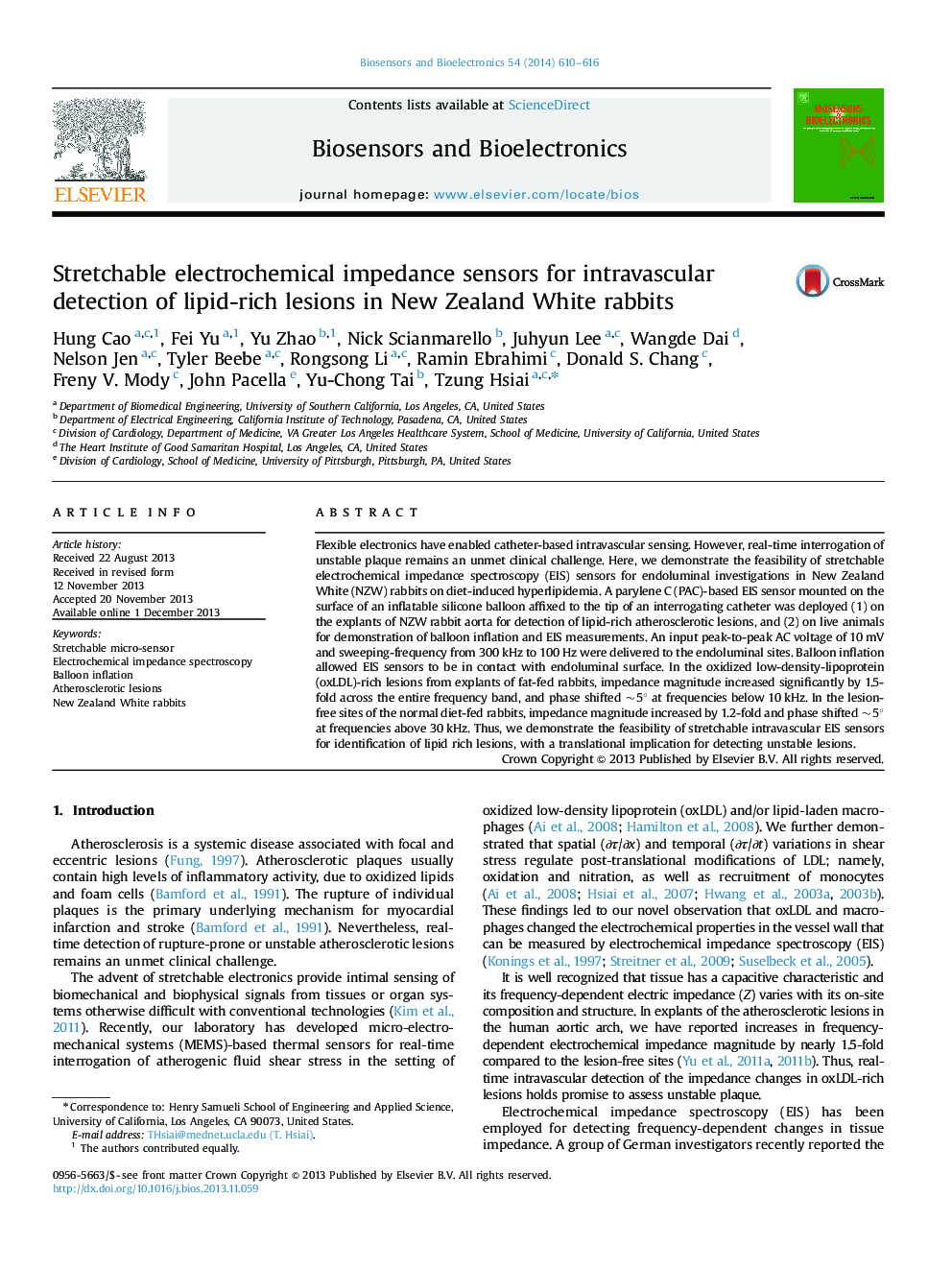| Article ID | Journal | Published Year | Pages | File Type |
|---|---|---|---|---|
| 7233779 | Biosensors and Bioelectronics | 2014 | 7 Pages |
Abstract
Flexible electronics have enabled catheter-based intravascular sensing. However, real-time interrogation of unstable plaque remains an unmet clinical challenge. Here, we demonstrate the feasibility of stretchable electrochemical impedance spectroscopy (EIS) sensors for endoluminal investigations in New Zealand White (NZW) rabbits on diet-induced hyperlipidemia. A parylene C (PAC)-based EIS sensor mounted on the surface of an inflatable silicone balloon affixed to the tip of an interrogating catheter was deployed (1) on the explants of NZW rabbit aorta for detection of lipid-rich atherosclerotic lesions, and (2) on live animals for demonstration of balloon inflation and EIS measurements. An input peak-to-peak AC voltage of 10 mV and sweeping-frequency from 300 kHz to 100 Hz were delivered to the endoluminal sites. Balloon inflation allowed EIS sensors to be in contact with endoluminal surface. In the oxidized low-density-lipoprotein (oxLDL)-rich lesions from explants of fat-fed rabbits, impedance magnitude increased significantly by 1.5-fold across the entire frequency band, and phase shifted ~5° at frequencies below 10 kHz. In the lesion-free sites of the normal diet-fed rabbits, impedance magnitude increased by 1.2-fold and phase shifted ~5° at frequencies above 30 kHz. Thus, we demonstrate the feasibility of stretchable intravascular EIS sensors for identification of lipid rich lesions, with a translational implication for detecting unstable lesions.
Keywords
Related Topics
Physical Sciences and Engineering
Chemistry
Analytical Chemistry
Authors
Hung Cao, Fei Yu, Yu Zhao, Nick Scianmarello, Juhyun Lee, Wangde Dai, Nelson Jen, Tyler Beebe, Rongsong Li, Ramin Ebrahimi, Donald S. Chang, Freny V. Mody, John Pacella, Yu-Chong Tai, Tzung Hsiai,
